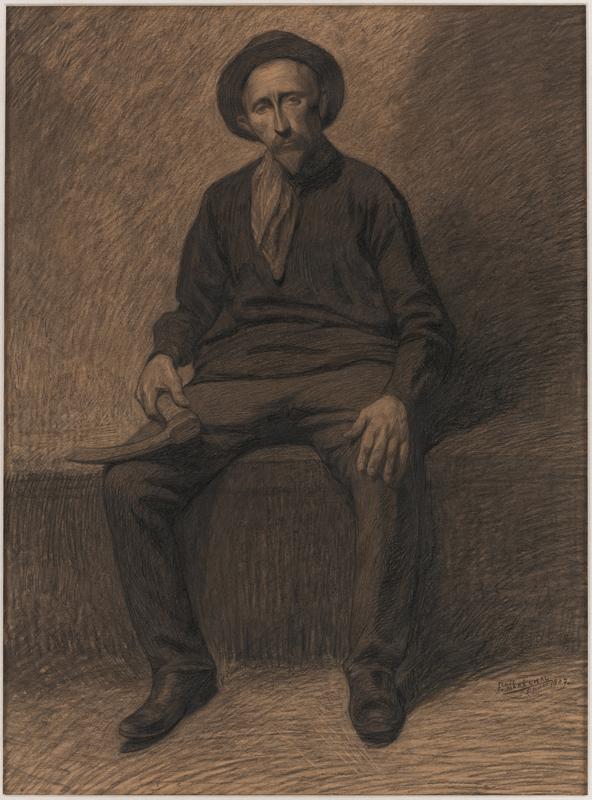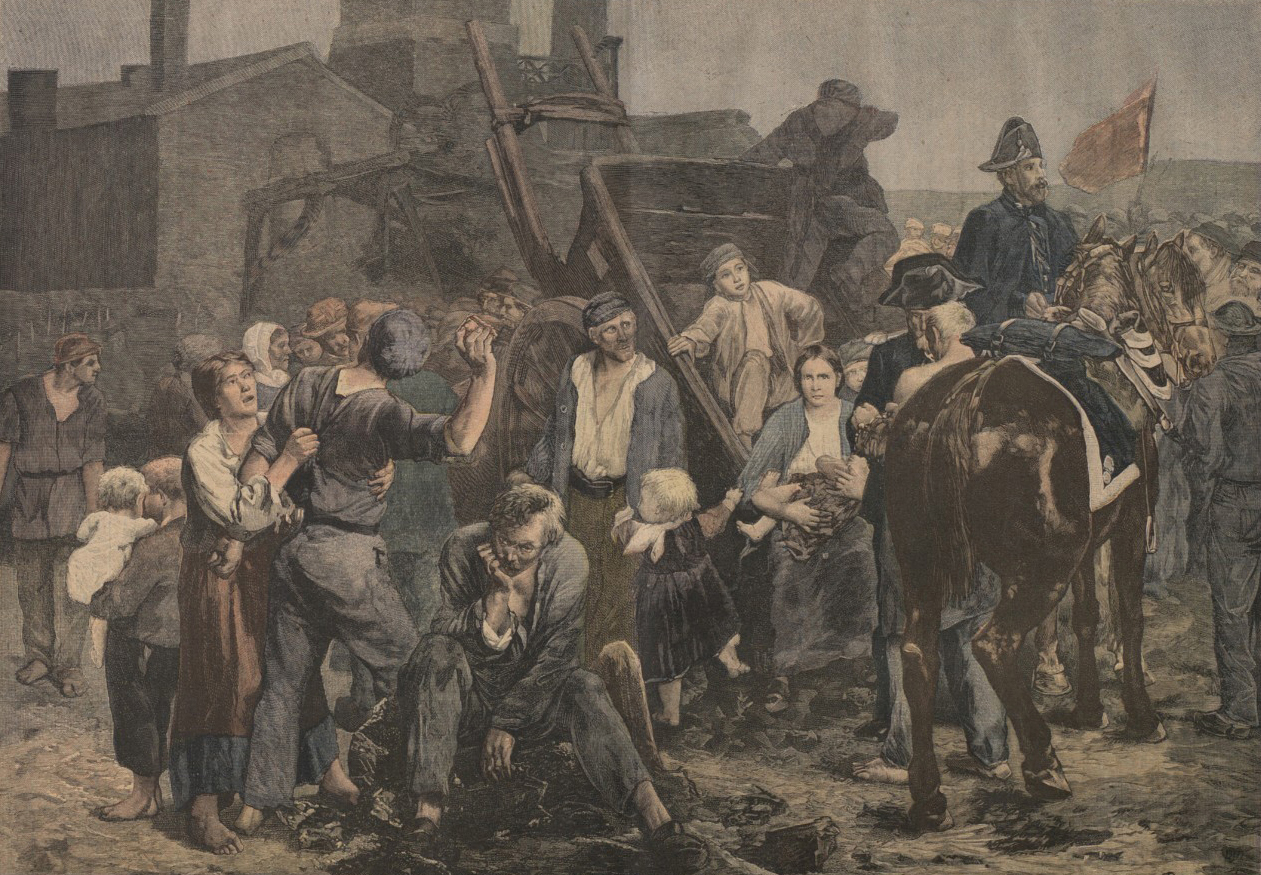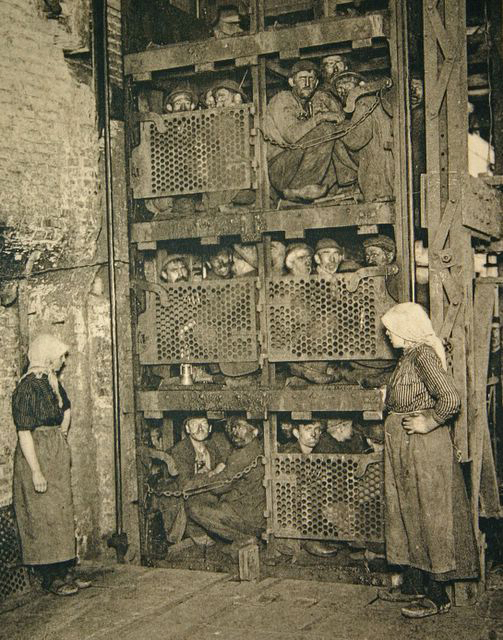
120. François Maréchal, Seated Miner
| Artist | François Maréchal, Belgian, Housse (Liège) 1861–Liège 1945 |
| Title, Date | Seated Miner, 1907 |
| Medium | Charcoal on tan paper |
| Dimensions | 26 3/4 × 20 5/16 in. (67.9 × 51.6 cm) |
| Inscriptions + Marks | Lower right: F.çois / Maréchal / 5 mars 1907 |
| Provenance | [Galerie Maurice Tzwern–Pandora, Brussels, until 1998; to Weisberg]; Yvonne and Gabriel Weisberg, Minneapolis |
| Exhibition History | "Expanding the Boundaries: Selected Drawings from the Yvonne and Gabriel P. Weisberg Collection," Mia (2008) and Snite Museum of Art, Notre Dame, Ind. (2010); "The World at Work: Images of Labor and Industry, 1850 to Now," Mia, 2012; "Reflections on Reality: Drawings and Paintings from the Weisberg Collection," Mia, 2022–23 |
| References | Sura Levine and Françoise Urban, "Hommage à Constantin Meunier (1831–1905)" (Antwerp: Galerie Maurice Tzwern–Pandora, 1998), p. 179, no. 93; Lisa Dickinson Michaux with Gabriel P. Weisberg, "Expanding the Boundaries: Selected Drawings from the Yvonne and Gabriel P. Weisberg Collection" (exh. cat.), Minneapolis Institute of Arts (Minneapolis, 2008), pp. 50–51, fig. 31 |
| Credit Line | Promised gift of Gabriel P. and Yvonne M.L. Weisberg, Minneapolis |
This drawing is deeply rooted in François Maréchal’s native Wallonia, a French-speaking region in southern Belgium. Rich deposits of coal and ready transportation along the Meuse River made Wallonia the first fully industrialized region in Europe. The pace of the Industrial Revolution was quickened by John and James Cokerill’s introduction of blast-furnace technology there in 1817. Harsh working conditions, unusually high incidences of on-the-job mortality, and low wages led to considerable tension between laborers and business owners. Workers gained the right to unionize in 1866, but conditions improved only marginally. When Maréchal made this drawing, Belgium’s average nonagricultural laborer still worked more than sixty hours per week.1 The promise of universal suffrage, granted throughout Belgium in 1893, was simultaneously undercut by the institution of plural voting—extra votes were granted to those who held diplomas, had money, or paid extra poll taxes. Clearly the deck was stacked against members of the working class who hoped to bring change through the democratic process.

In several countries, including Belgium and France, artists from various disciplines zeroed in on miners as potent symbols of oppressed workers. Literary works, especially Émile Zola’s novel Germinal (1885), raised public awareness.2 Paintings such as Alfred Roll’s Miners’ Strike (1880) took up the subject as well (fig. 1). Maréchal, however, portrayed his subject as neither hero nor victim. The unadorned setting and the figure’s neutral expression suggest simple dignity and humanity. The use of charcoal on tan paper produces the impression of black coal dust blanketing the scene.
This miner may not have been a native Belgian; immigrant labor was widely exploited in Wallonia. Many Italians came to work in the coal mines, and Maréchal, having lived in Italy from 1902 to 1905, may have felt a special kinship with them. A photograph of Italian miners from the era gives a sense of the conditions they faced (fig. 2).

Maréchal was born near the industrial city of Liège, in northeastern Wallonia. At age twelve he was apprenticed to his father, an armorer, but soon reoriented himself toward painting. He worked for a decorative painter, then from 1879 to 1886 studied at the Académie Royale des Beaux-Arts (Royal Academy of Fine Arts) in Liège, most notably under Adrien de Witte. He spent time abroad in Algeria (1893–99) and Rome (1903–5). In 1905 he returned to Liège and took a teaching post at the academy. The year he made the present drawing, he was appointed professor. In 1913 he became director, a post he held for seven years. As a practicing artist, Maréchal worked as a painter, printmaker, and illustrator. His prolific output emphasized landscapes and—as demonstrated here—figure studies.
TER
Notes
In 1913 filmmaker Albert Capellani brought Germinal to the screen. ↩︎